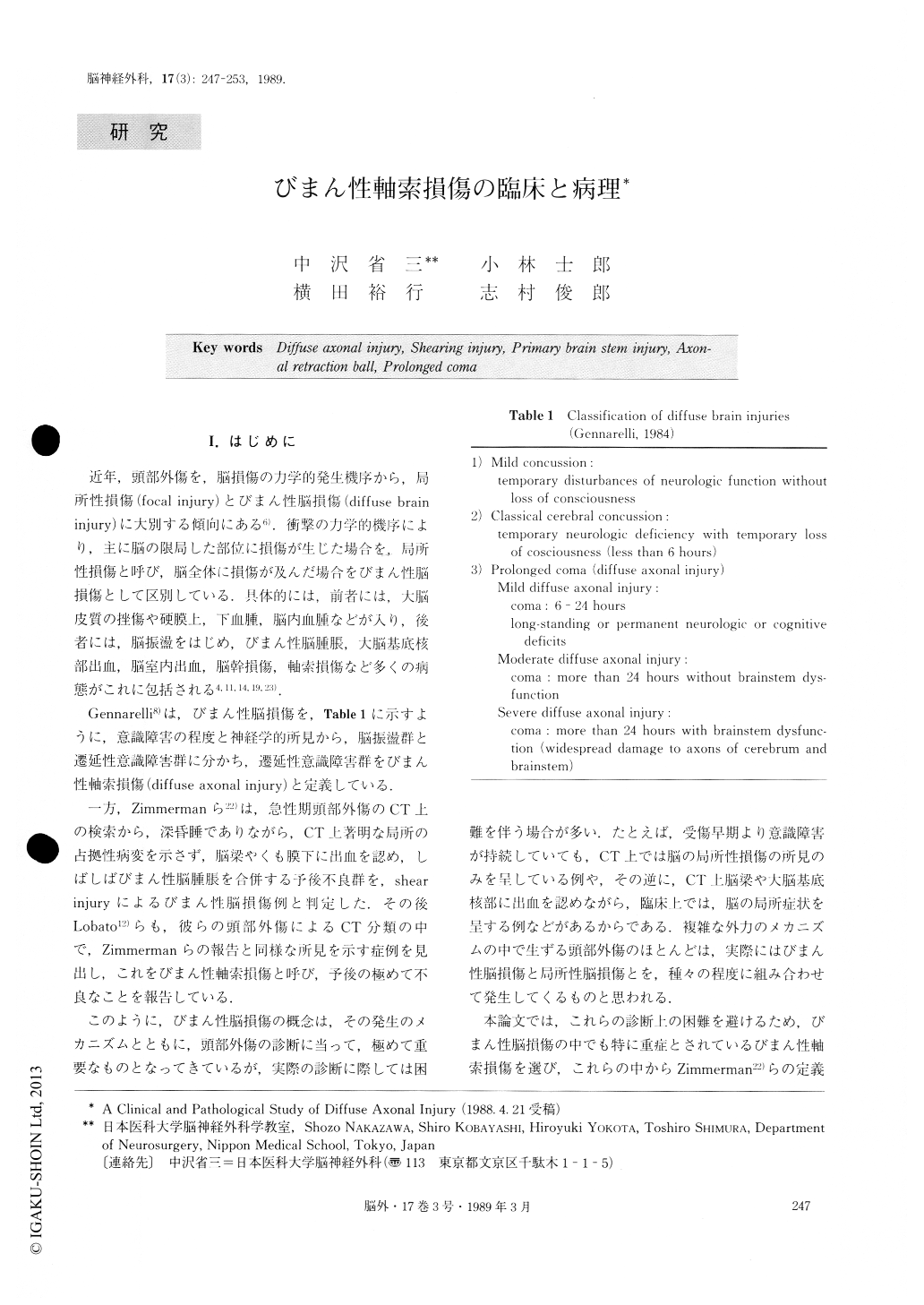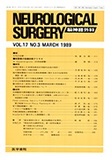Japanese
English
- 有料閲覧
- Abstract 文献概要
- 1ページ目 Look Inside
I.はじめに
近年,頭部外傷を,脳損傷の力学的発生機序から,局所性損傷(focal injury)とびまん性脳損傷(diffuse braininjury)に大別する傾向にある6).衝撃の力学的機序により,主に脳の限局した部位に損傷が生じた場合を,局所性損傷と呼び,脳全体に損傷が及んだ場合をびまん性脳損傷として区別している.具体的には,前者には,大脳皮質の挫傷や硬膜上,下血腫,脳内血腫などが入り,後者には,脳振盪をはじめ,びまん性脳腫脹,大脳基底核部出血,脳室内出血,脳幹損傷,軸索損傷など多くの病態がこれに包括される4,11,14,19,23).
Gennarelli8)は,びまん性脳損傷を,Table 1に示すように,意識障害の程度と神経学的所見から,脳振盪群と遷延性意識障害群に分かち,遷延性意識障害群をびまん性軸索損傷(diffuse axonal injury)と定義している.
There is increasing evidence from human and ex-perimental studies that the most important factor gov-erning the outcome in head injury is the severity of dif-fuse axonal injuries.
The authors have experienced 18 cases of severe dif-fuse axonal injury which showed post-traumatic coma for more than 24 hours and CT findings resembling those of shearing injuries of the cerebral white matter such as have been presented by Zimmerman et al. (1978).
The consciousness levels on admission were 6 or less on the Glasgow Coma Scale and all cases were shown clinically to have primary brain stem injury.

Copyright © 1989, Igaku-Shoin Ltd. All rights reserved.


